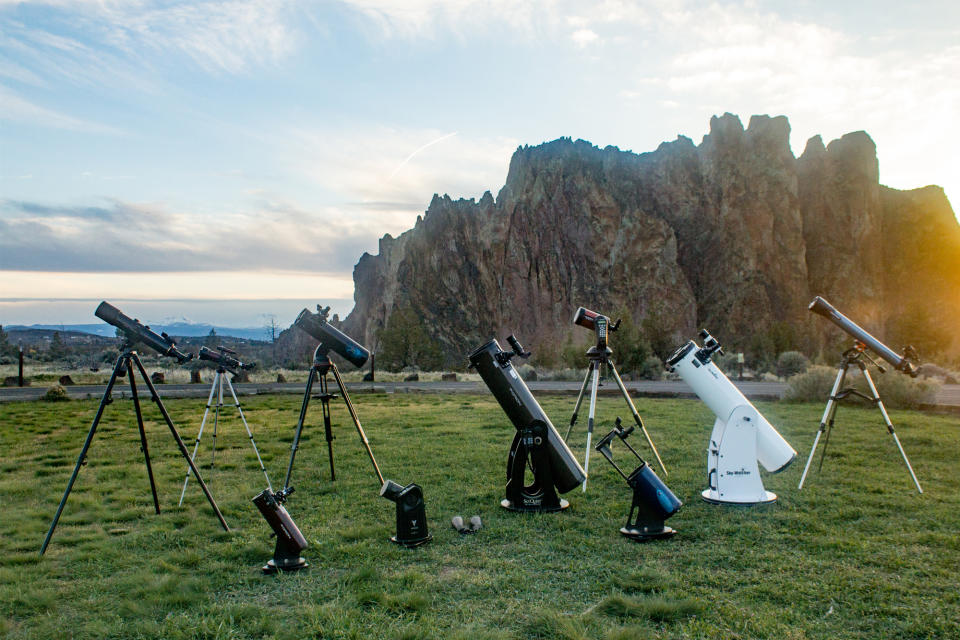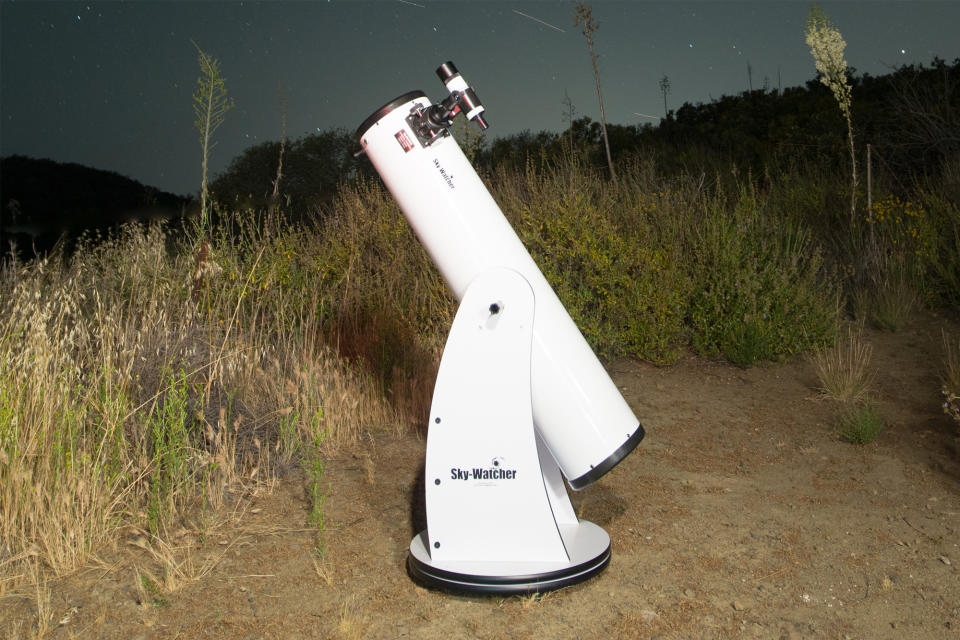The best telescopes for beginners
Including a lower-priced pick for under $200.

By Colin Rosemont
This post was done in partnership with Wirecutter, reviews for the real world. When readers choose to buy Wirecutter's independently chosen editorial picks, it may earn affiliate commissions that support its work. Read the full article here.
Few things are as awe-inspiring as being out under a clear night sky, looking up, and gazing at a seemingly infinite array of stars overhead. So we gathered 10 telescopes (and one pair of binoculars), and after five months of star parties, we think the Celestron NexStar 5SE is the best telescope for a curious amateur. It gathers enough light for you to view the best features of our solar system, and it also gives you enough power to begin to explore deep-sky objects, a feature usually reserved for much more expensive options. In addition, this scope has an electronic GPS database that is preloaded with almost 40,000 celestial objects, and after you calibrate this model, it can scan the skies for you. You'll never be left wondering what to look at next.
Who this is for
These telescopes are for beginning astronomers, and designed to help you become familiar with the night sky. Using one of these scopes, you can start with a look at the moon, move on to the planets of our solar system, and then venture on to the "deep sky" to examine star clusters, nebulae, and galaxies. We wanted to find scopes that had the appropriate range to start a new astronomer out and then keep them involved.
How we picked and tested

We spent over 20 hours scouring the Internet for every resource written about buying your first telescope. Then, we stopped by telescope workshops, observatories, and retailers to interview the experts. We also polled more than 260 Wirecutter readers to determine what they look for in a telescope and how much they expected to pay for one (less than $700).
When considering which telescopes to test, we considered a variety of features, including aperture and focal length. We also looked at the design and size of the eyepiece and finder scope, and the type and flexibility of the scope. To read about these features in detail, please see our full guide to telescopes.
Eventually, we selected 10 telescopes to test over the course of five months in Oregon. We timed how long it took to set up each telescope, and then tested stability, clarity, and user-friendliness with a 12-person test group. We also performed a Ronchi eyepiece test, at the suggestion of the experts we spoke with, to test each model's optical quality.
Our pick

The Celestron NexStar 5SE Schmidt-Cassegrain telescope is our top pick due to its all-around accessibility and ease of use. Its primary 5-inch mirror offers crisp, intimate views of the moon and bright planets, and provides an entry into views of distant galaxies and star clusters. It includes a 25mm eyepiece, as well as an ultra-sturdy steel tripod that attaches to the optical tube without the need for tools. It's easy to disassemble and transport, and weighs about 27 pounds.
This telescope operates on a fully computerized system with a handheld controller to aim the telescope at over 40,000 nighttime objects. In contrast with our experience with some competing models, we found that this controller worked seamlessly, offering micro adjustments and responsive tracking with the attached controller system. However, the computerized features require eight AA batteries, which aren't included.
Budget pick

Finding a high-quality telescope on a budget can be hard, so when we kept hearing about the Astronomers Without Borders OneSky Reflector Telescope (manufactured by Celestron), which comes in at under $200, we had to give it a try. This telescope is manufactured especially for sale by the nonprofit organization Astronomers Without Borders, whose profits go toward expanding astronomical scientific educational programming in underserved countries around the world. During our tests, this model not only excelled in image quality, providing great views of Saturn's rings, Jupiter's moons, and faint detail in the spiral arms of the Andromeda galaxy, but also offered the best mix of portability and ease of assembly and use for its price.
The OneSky comes with both a 10mm eyepiece and a 25mm eyepiece for a range of viewing magnifications. For the price, this starter telescope has a dynamic range that can really get you exploring everything from the moon to some deep-sky objects.
Also great

The Sky-Watcher Traditional Dobsonian Telescope (8-inch) is another great choice. The upgrade it provides in light-gathering capacity, however, comes with the caveat that next to our Astronomers Without Borders budget pick, this Sky-Watcher Dobsonian model is substantially larger, weighing about 60 pounds including the scope and base. We had this telescope fully assembled and ready to go in under an hour, which, compared with some other telescopes we tested, is quite fast.
The Sky-Watcher Dobsonian does not come with any computerized component, but we think the superb optics of this pick make it a good choice for people who want a taste of a high-powered scope but don't need or want the hassle of a computerized mount. This type of telescope, commonly called a "light bucket," offers exceptional image quality and light-gathering capability for the price.
This guide may have been updated by Wirecutter. To see the current recommendation, please go here.
Note from Wirecutter: When readers choose to buy our independently chosen editorial picks, we may earn affiliate commissions that support our work.
